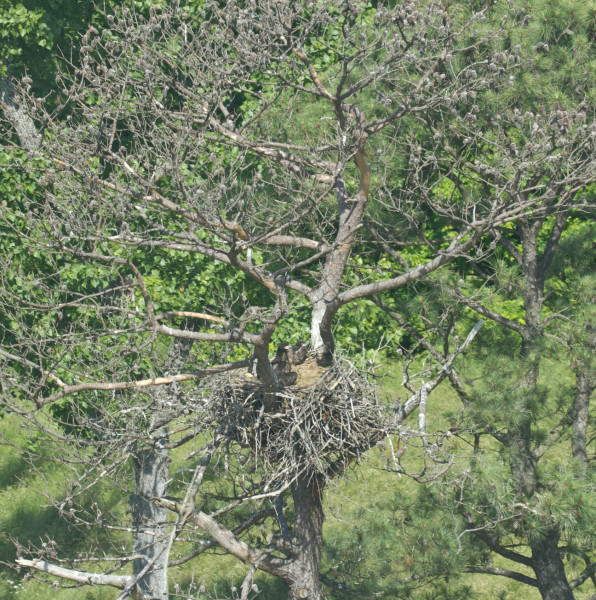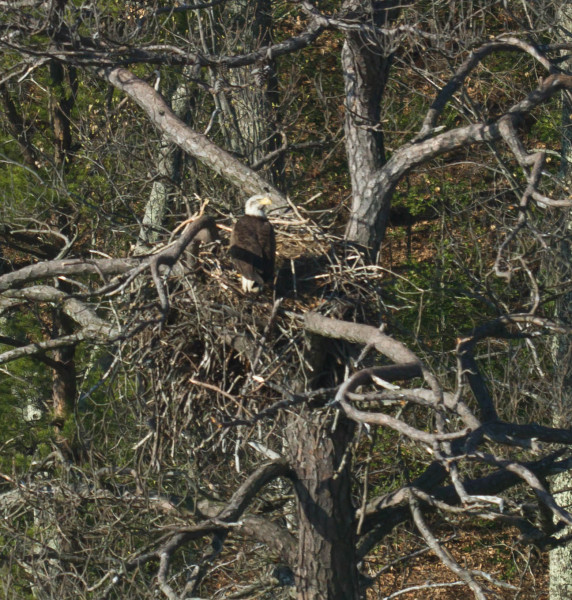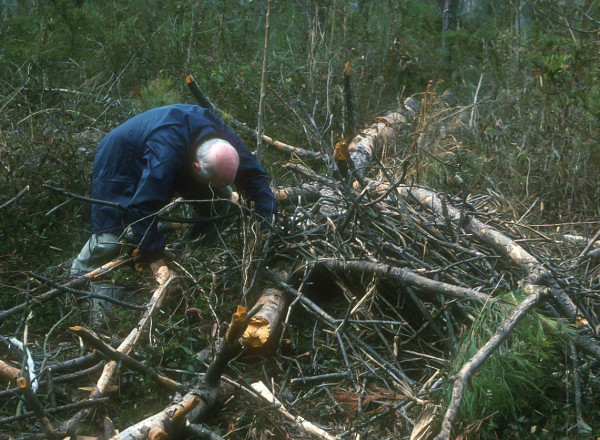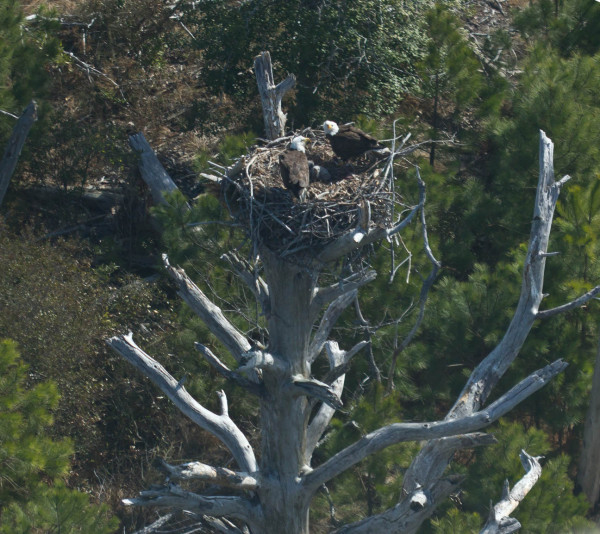Eagles rarely gamble during the breeding season
Deciphering the winter composition of sharp-tailed sparrows
January 6, 2016
Reflections on Fones Cliffs
January 8, 2016

A brood of eagles that later fledged from a nest tree along the James River that had been dead for less than one year. The pair moved to a live tree the following year. Photo by Bryan Watts.
The date is March 5th, 2005 and we are flying an eagle survey on the upper Rappahannock River in the Chesapeake Bay. From the river, fingers of water reach out across the land ending in serpentine forests that wind their way through open farm fields. As we fly up one of these drainages a familiar pattern appears. Beavers have built a series of dams interrupting the ribbon of forest. I count eight dams in succession. From above, the ponds look like terraced rice patties in the mountains of China or Thailand. Standing along one of the dams is a lone pine tree that supports a huge eagle nest. We glide low over the nest and see that the female is incubating but fast asleep with her head down. In the nest next to her is the distinct auburn hair of a muskrat glowing in the sunlight. Despite the idyllic scene, the female is on borrowed time. The nest tree is completely dead, having succumbed to rising water.

A wishful fourth-year eagle stands on a nest within a dead pine that had been abandoned by the territorial pair the previous year. Photo by Bryan Watts.
Eagle nest trees die regularly in the Chesapeake Bay. Due to their large size and position on the landscape, nest trees are particularly vulnerable to lightening strikes but are also killed by water, disease, and insect pests. Once dead, the trees progress through a predictable series of changes. The bark sloughs off, they lose their lateral limbs, and finally either the crown is broken out or the entire tree snaps off at the base. Within three to five years, most dead pine trees have lost their crowns or are on the ground. By then, most eagle pairs will have moved on. Eagles are not risk takers when it comes to using nest trees.

Mitchell Byrd picks through the remains of a nest along the York River looking for eggshell fragments. The nest tree was killed by lightening the year before and was snapped off by a thunderstorm during the night while the female was incubating. Photo by Bryan Watts.
Despite the fact that nest trees die and topple over every year, the loss of a breeding attempt to tree failure is extremely rare for eagle pairs in the Chesapeake Bay. Of more than 10,000 breeding attempts that have been monitored in Virginia since 1962, only one in 850 failed due to tree loss. Nearly half of these losses were due to violent storms that snapped off live trees during the nesting period. Of the remaining losses, nearly all were in trees that had been dead only one year. The median time that pairs continue to use nests following nest tree mortality is one year, but the average is just less than two years. Birds that lost breeding attempts when dead trees were blown down are the exception when pairs have hedged their bets a bit too far. As a rule, eagle pairs nesting in the Chesapeake quickly pull up roots and move on when their nest tree is killed.

Sometimes size does matter. A pair of eagles feeding a young brood in a nest built in the crotch of a massive dead pine tree on the Eastern Shore of Virginia. The tree had been dead for eight years but continued to support the nest. Photo by Bryan Watts.
Written by Bryan Watts | bdwatt@wm.edu | (757) 221-2247
January 7, 2016



